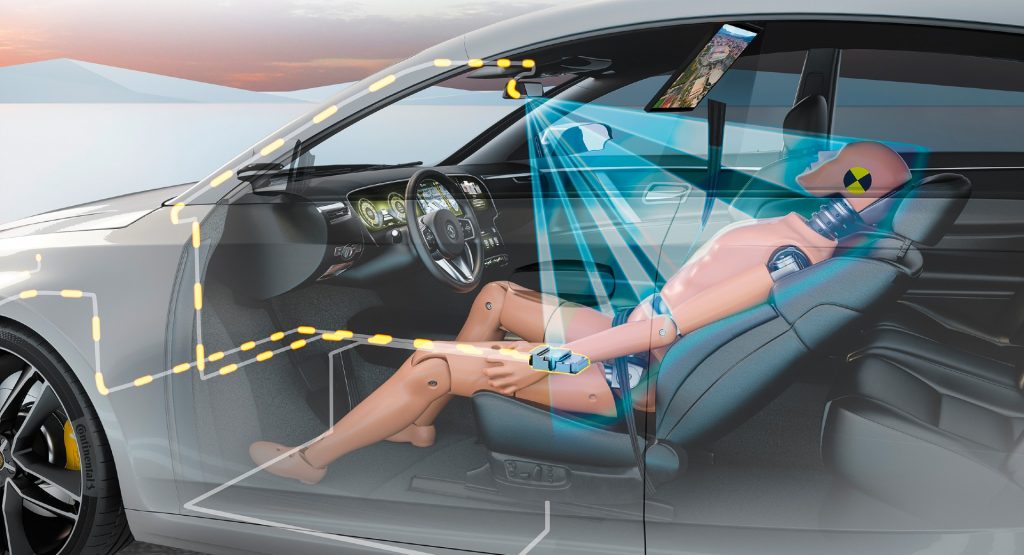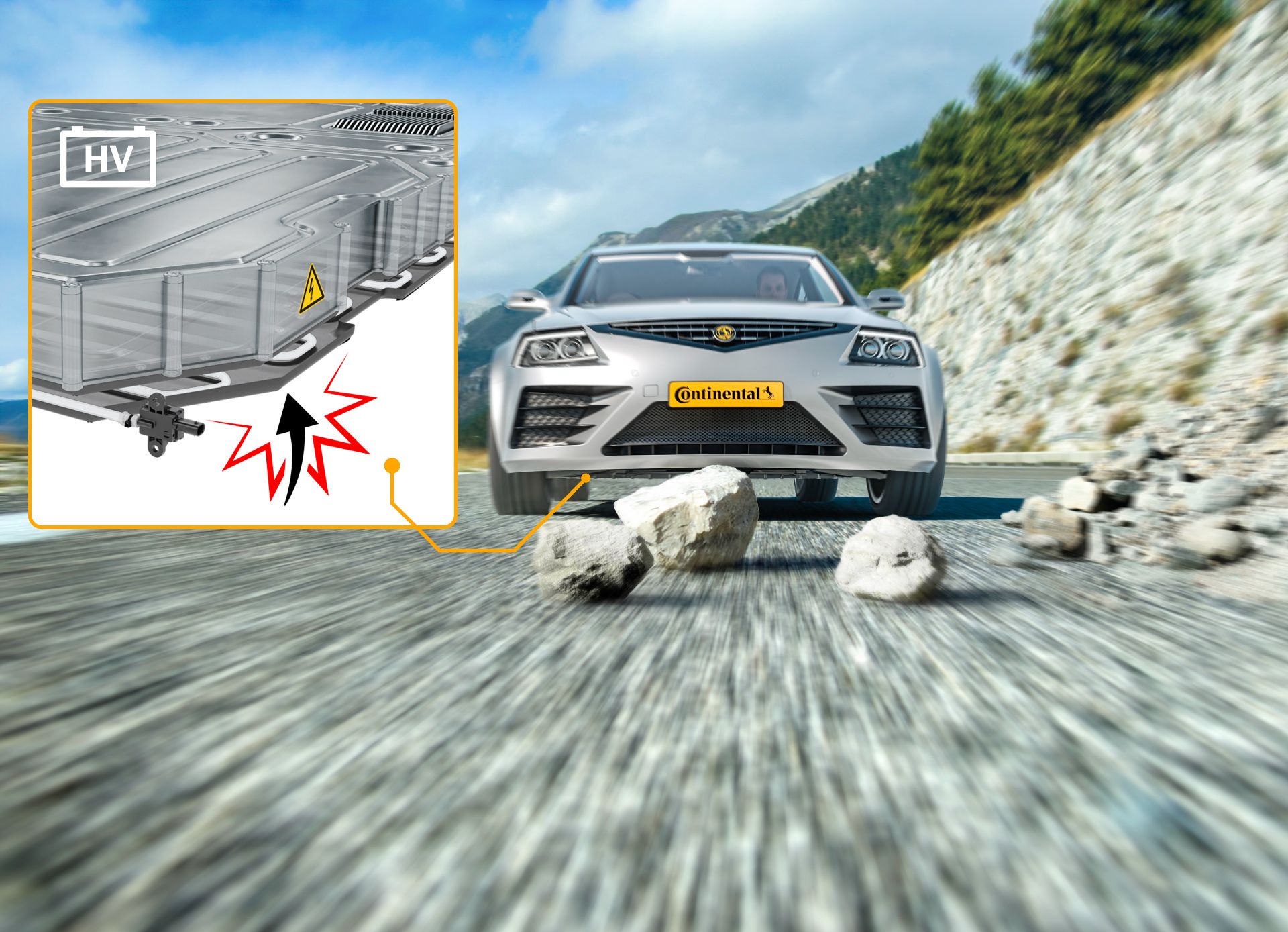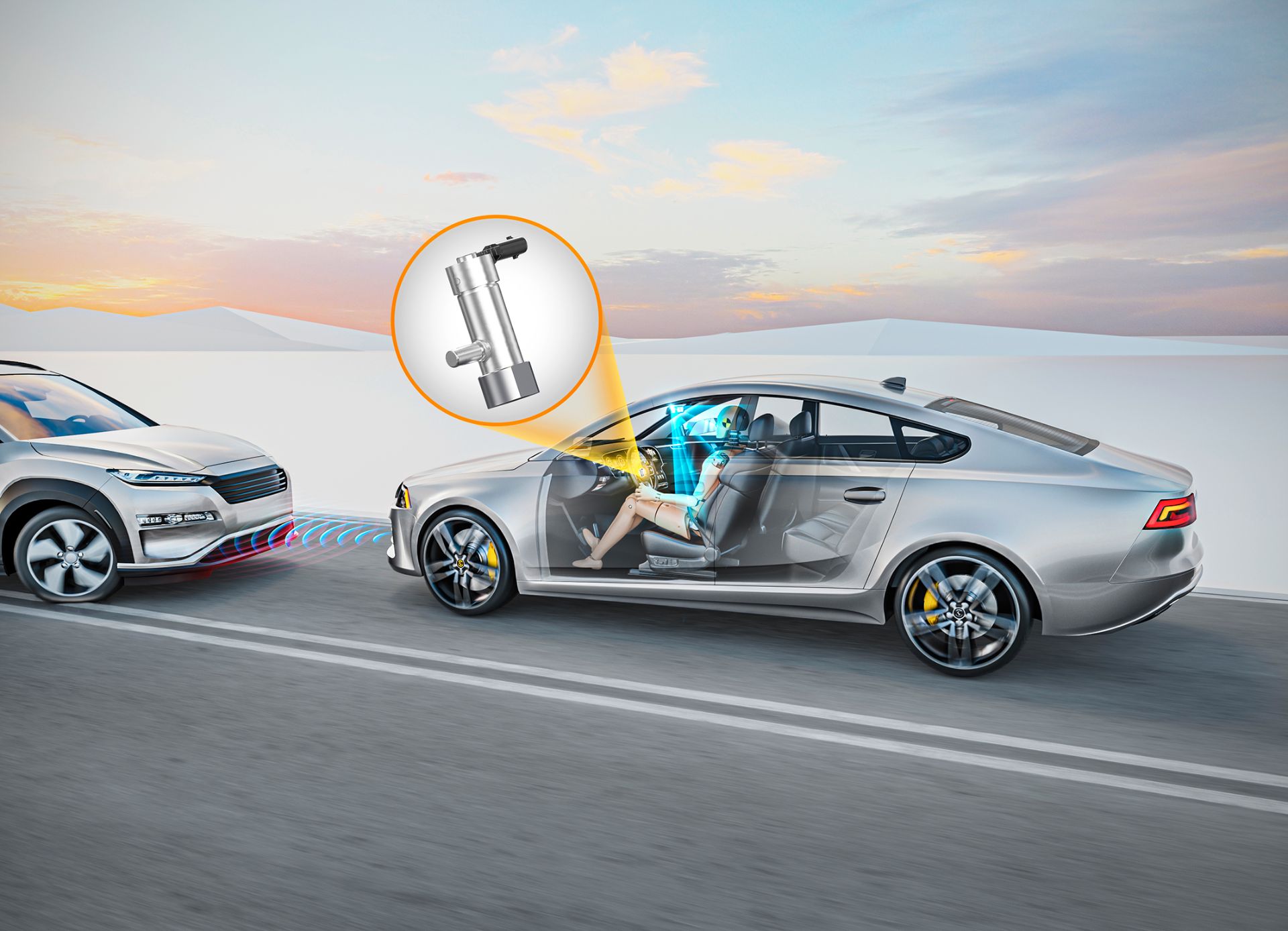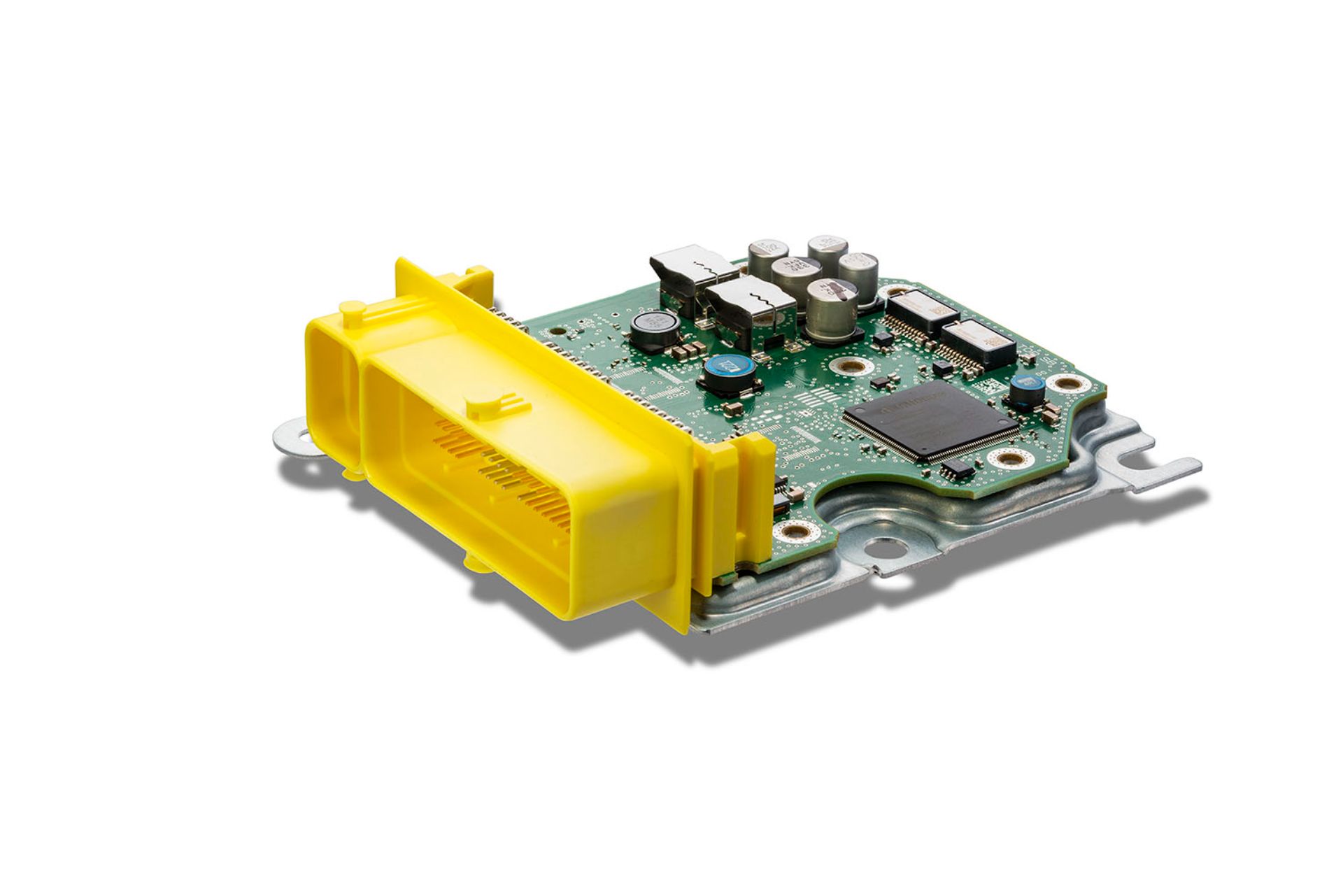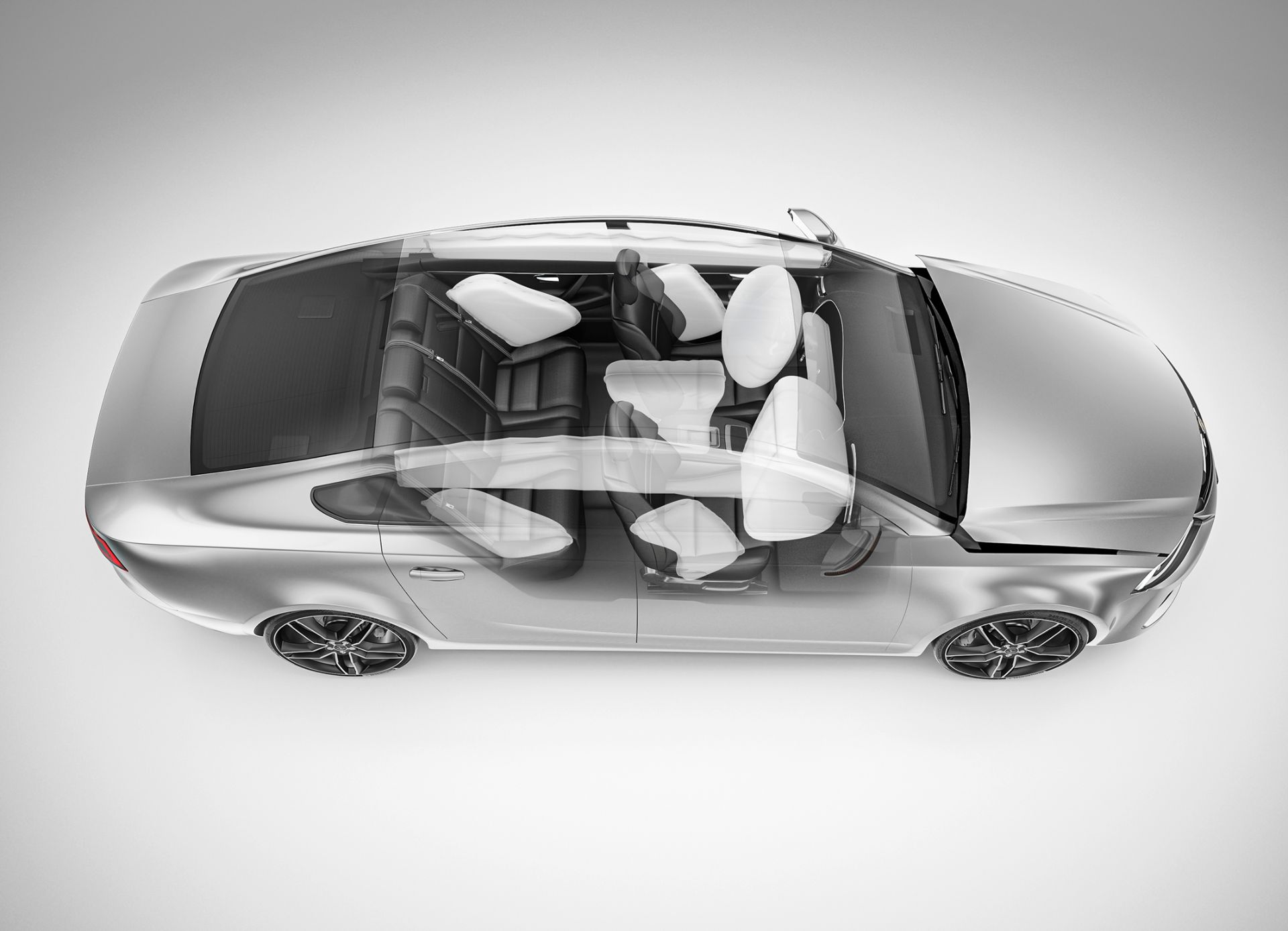Continental is celebrating 40 years of developing airbag controls and the company seized the opportunity to present a series of new safety systems at the IAA Mobility 2021 in Munich including the pre-crash safety monitor, the airbag control valve, and the battery impact detector.
Development for the airbag control units (ACU) started in 1981, while production commenced in 1986. Since then, Continental has manufactured more than 350 million units. During the course of 35 years, the ACU has been vastly improved, from controlling a single airbag to controlling up to 48 ignition circuits (depending on the variant) and the capability of receiving over-the-air software updates for improved cyber security and crash detection even while an electric vehicle is charging.
Read Also: Safety Tech Will Kill Manual Transmissions Before EVs Do, Says Report
Continental’s Pre-Crash Safety Monitor combines the monitoring of the surrounding environment and the cabin in order to “adapt the airbag deployment strategy more closely to the situation, the occupants and their position”. Using the data from the increasing amount of sensors found in modern vehicles, the airbags can be deployed earlier and thanks to the airbag control valve technology, which is still in the pre-development stage, each unit’s filling level can be adjusted for optimum occupant protection.
This not only allows for greater protection in case of an accident where every millisecond counts but also helps to extend the service life of airbags that can be deployed in a more controlled manner. In the future, Continental suggests that the airbag could be softened exactly at the time of the passenger’s income, reducing the rebound effect.
See Also: Continental And Siemens Team Up To Make eHighways A Viable Reality
Another feature that sounds very useful for the electrified era is the Battery Impact Detection system. Using contact sensing sensors called the CoSSy (Contact Sensor System) which work in a similar manner to the pedestrian protection system, light damage to the battery can be immediately detected. Continental will integrate this function into the ACU and plans on using it for detecting vandalism and monitoring road conditions.
The aforementioned systems are still under development but judging from the fact that they use technology that is currently available, we expect to see them applied in production vehicles sometime in the coming years.








